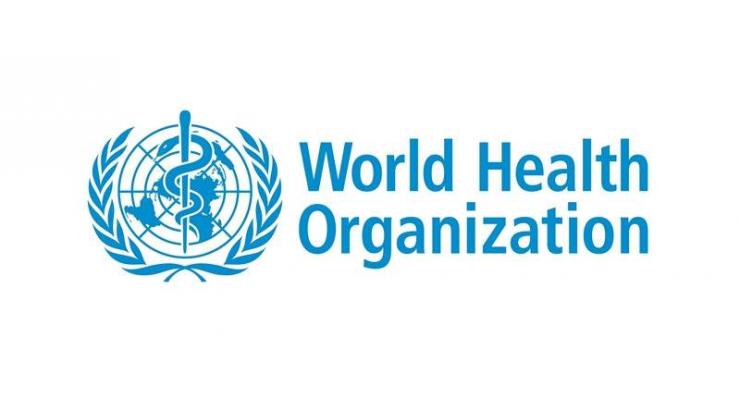
One In 10 Medical Products In Developing Countries Substandard: WHO
Sumaira FH Published December 08, 2017 | 01:00 PM

An estimated one in 10 medical products circulating in low- and middle-income countries is either substandard or falsified, according to a new research report released by World Health Organization (WHO)
ISLAMABAD, (UrduPoint / Pakistan Point News - 08th Dec, 2017 ) :An estimated one in 10 medical products circulating in low- and middle-income countries is either substandard or falsified, according to a new research report released by World Health Organization (WHO).
The report said that people are taking medicines that fail to treat or prevent disease. Not only this is a waste of money for individuals and health systems that purchase these products, but substandard or falsified medical products can cause serious illness or even death.
Substandard and falsified medicines particularly affect the most vulnerable communities, says Dr Tedros Adhanom Ghebreyesus, WHO Director-General. Imagine a mother, who gives up food or other basic needs to pay for her child's treatment, is unaware that the medicines are substandard or falsified, and then that treatment causes her child to die.
This is unacceptable. Countries have agreed on measures at the global level it is time to translate them into tangible action. Since 2013, the WHO has received 1500 reports of cases of substandard or falsified products.
Of these, anti-malarials and antibiotics are the most commonly reported. Most of the reports (42%) come from the WHO African Region, 21% from the WHO Region of the Americas, and 21% from the WHO European Region.
This is likely just a small fraction of the total problem and many cases may be going unreported. For example, only 8% of reports of substandard or falsified products to WHO came from the WHO Western Pacific Region, 6% from the WHO Eastern Mediterranean Region, and just 2% from the WHO South-East Asia Region, the report said.
Many of these products, like antibiotics, are vital for people's survival and wellbeing, says Dr Maringela Sim'o, Assistant Director-General for Access to Medicines, Vaccines and Pharmaceuticals at WHO.
Substandard or falsified medicines not only have a tragic impact on individual patients and their families, but also are a threat to antimicrobial resistance, adding to the worrying trend of medicines losing their power to treat.
Prior to 2013, there was no global reporting of this information. Since WHO established the Global Surveillance and Monitoring System for substandard and falsified products, many countries are now active in reporting suspicious medicines, vaccines and medical devices.
WHO has trained 550 regulators from 141 countries to detect and respond to this issue. As more people are trained, more cases are reported to WHO. WHO has received reports of substandard or falsified medical products ranging from cancer treatment to normal diseases.
They are not confined to high-value medicines or well-known brand Names and are split almost evenly between generic and patented products. In conjunction with the first report from the Global Surveillance and Monitoring System published, WHO is publishing research that estimates a 10.5% failure rate in all medical products used in low- and middle-income countries.
This study was based on more than 100 published research papers on medicine quality surveys done in 88 low- and middle-income countries involving 48,000 samples of medicines. Lack of accurate data means that these estimates are just an indication of the scale of the problem.
More research is needed to more accurately estimate the threat posed by substandard and falsified medical products. The report said that the globalization is making it harder to regulate medical products.
Many falsifiers manufacture and print packaging in different countries, shipping components to a final destination where they are assembled and distributed. The bottom line is that this is a global problem, says Dr Sim'o.
Countries need to assess the extent of the problem at home and cooperate regionally and globally to prevent the traffic of these products and improve detection and response.
Related Topics
Recent Stories

Experts raise concerns over introduction of 10-stick packs

Iranian president arrives in Karachi

Law Minister expresses Govt's resolve to address issue of missing persons

Rizwan’s batting order may be changed: Sources

Nawaz Sharif to visit Guangzhou exhibition in China

FM Dar not traveling to China: Foreign Office

PM takes notice of deliberate delay in tax cases

Iranian President visits Allama Iqbal’s mausoleum

Iranian President arrives in Lahore today

Currency Rate In Pakistan - Dollar, Euro, Pound, Riyal Rates On 23 April 2024

Today Gold Rate in Pakistan 23 April 2024

Islam enlightened world with its teachings about knowledge: Dr Jamileh
More Stories From Pakistan
-
Sindh University hosts symposium to combat violence against women, children
5 minutes ago -
Balochistan's lawmakers call for development initiatives in province
5 minutes ago -
AC visits Shalimar Zone to check notified price lists
6 minutes ago -
PILDAT delegation visits KPCVE
15 minutes ago -
Operation against profiteers, hoarders continues
15 minutes ago -
Agriculture, IT sectors hold potential to contribute significantly to country's economic growth: Min ..
15 minutes ago
-
Board adopts zero tolerance policy against cheating mafia: Chairman RBISE
15 minutes ago -
Dry weather forecasts for northern Sindh
16 minutes ago -
Implementation of revised rates of Roti, Naan being ensured: DC
45 minutes ago -
District admin launches crackdown against meat price, substandard chicken sales
45 minutes ago -
Online taxi driver commit suicide in Karachi
46 minutes ago -
Over Rs 335 million disbursed among 2000 students: VC Sukkur IBA
46 minutes ago